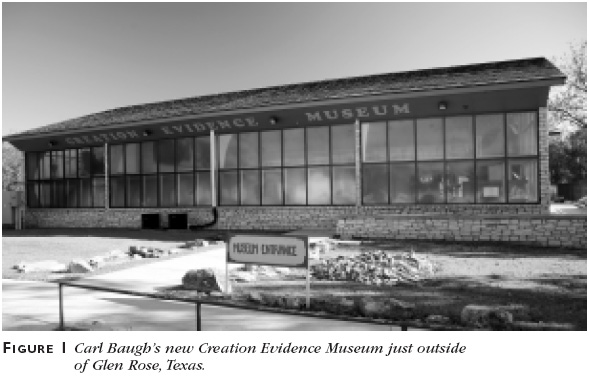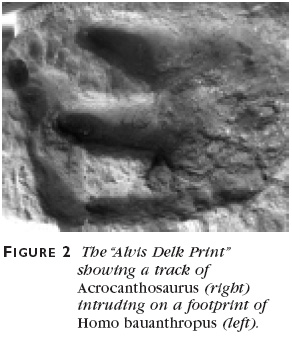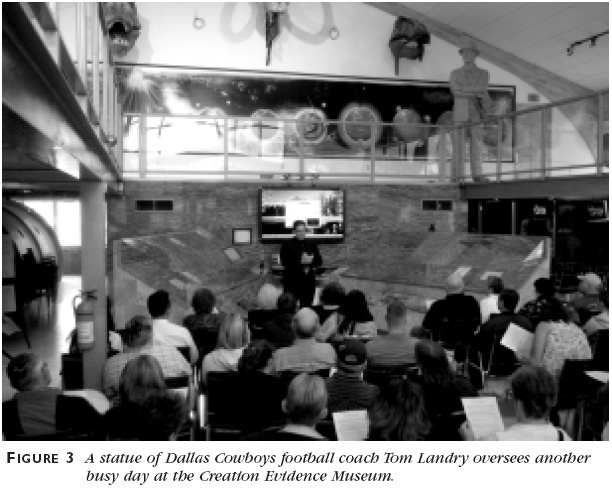In the last issue of RNCSE, Randy Moore's account of the Creation Evidence Museum gave an overview and history of the facility and its founder. In October 2009, Randy wrote that he was going to have the opportunity to visit the museum again, so we asked him to write this follow-up.

I Can't Make This Stuff Up
In November 2009, I visited beautiful Glen Rose, Texas, and could not resist stopping by Carl Baugh's Creation Evidence Museum. Baugh has moved his YEC-and-more "Creation in Symphony" message from his creaky double-wide trailer to a new two-story building. His message remains largely unchanged: visitors continue to hear about God's stretching the fabric of the heavens, God's putting Adam to sleep and taking a rib to make Eve, God's using a geyser to shoot water 70 miles into the air, and God's aligning the molecules of the universe to create magnetic fields and the "appearance of age" (for example, birds were created in mid-air).
Some of the museum's exhibits are also unchanged (for example, visitors can still see a man-made hammer embedded in early Cretaceous rock).
Other exhibits have been upgraded. For example,"the world's first hyperbaric biosphere" — which was originally about the size of a large barbecue-pit and connected to an oscilloscope — is now 62 feet long. That chamber simulates the pre-Flood environment (for example, increased magnetic fields to "help healing and cellular communication"). Baugh claims that the biosphere's environment has increased the lifespan of fruit flies (and, by implication, helps explain the long lifespans of biblical patriarchs), increased the growth of certain fish (and, by implication, helps explain the large sizes of early humans), and "altered snake venom at the molecular level." (I was relieved to see a sign stating that "We do not and will not experiment on humans.")

The Creation Evidence Museum is most famous for its "Flintstones Fossils" — that is, fossils claiming to show that humans lived with dinosaurs. The newest exhibit is a fossil discovered by amateur geologist Alvis Delk of Stephenville, Texas, showing a track of Acrocanthosaurus intruding on a 11" human footprint of Homo bauanthropus in Cretaceous rock (Figure 2). This fossil, which was excavated in 2000 but displayed only recently, is accompanied by another fossilized track of Acrocanthosaurus beside a fossilized handprint of H bauanthropus in Cretaceous rock. These fossils, which have been "verified with x-rays" at "a professional laboratory", are part of the Sir George Series (named in honor of His Excellency Governor General Ratu Sir George Cacobau of Fiji). Also on display is a large photo of Baugh.
There are numerous tables of YEC books, DVDs, posters, and other materials for sale. I have the dubious distinction of making the first purchase at the new museum.
Business is good at the Creation Evidence Museum. On the days I was there, the museum was full. It is a depressingly entertaining place; astounding claims can be found throughout the facility. But the most curious display is on the second floor of the museum. There, overlooking everything, is a 12'-high statue (Figure 3).

When I saw the statue from a distance, I assumed that it was a memorial to a YEC pioneer such as George McCready Price, Henry Morris, or perhaps even Baugh. But I was wrong. It's a statue of Tom Landry, a former coach of the Dallas Cowboys professional football team.
Is football-creationism next?
